Results
-
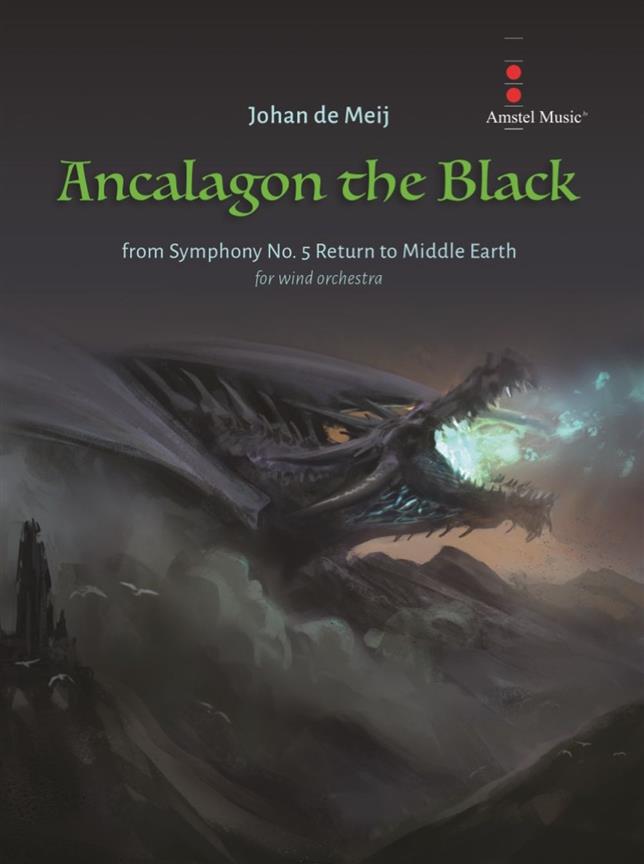 £148.00
£148.00Ancalagon the Black (from Symphony No.5, Return to Middle Earth) (Concert Band - Score and Parts) - De Meij, Johan
After 30 years, Johan de Meij revisits Middle-Earth, the enchanting mythological world of J.R.R. Tolkien, with his spectacular Symphony No.5 Return to Middle Earth. Although there are thematic reminiscences of his monumental first Symphony The Lord of the Rings from 1988, De Meij is putting a completely different musical vibe into this symphony. This instrumental movement vividly describes the black dragon Ancalagon, the largest creature in Tolkiens mythological world.Duration: 6.00
Estimated dispatch 7-14 working days
-
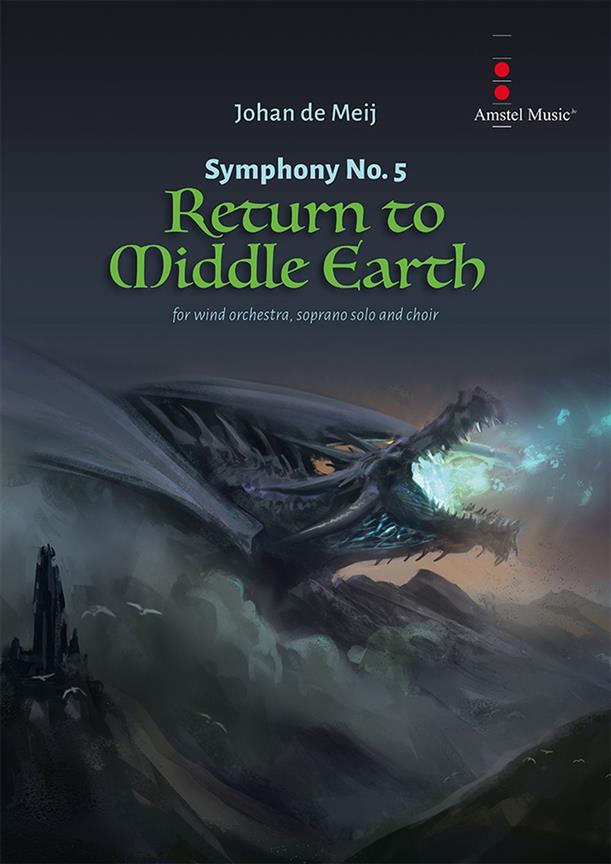 £615.50
£615.50Symphony No.5, Return to Middle Earth (Concert Band - Score and Parts) - De Meij, Johan
For Wind Orchestra, Soprano Solo and ChoirAfter 30 years, Johan de Meij revisits Middle-Earth, the enchanting mythological world of J.R.R. Tolkien, with his spectacular Symphony No. 5 Return to Middle Earth. Although there are thematic reminiscences of his monumental first Symphony The Lord of the Rings from 1988, De Meij is putting a completely different musical vibe into his new symphony. There is an important role for a solo soprano and mixed choir: they sing in Ilkorin, one of the Elvish languages of Middle-Earth. The Orcs and other thugs also take the stage, but they only use raw screams in their own language, also known as black speech.
Estimated dispatch 7-14 working days
-
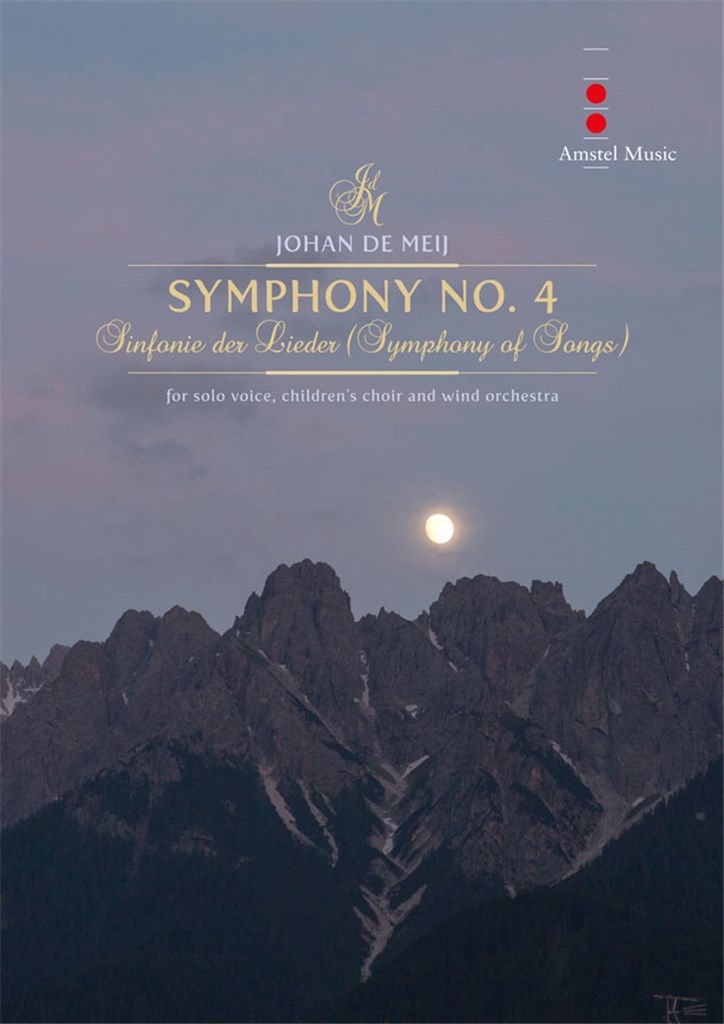 £1.95
£1.95Symphony No.4: Symphony of Songs (SATB Choral Octavo) - De Meij, Johan
Johan de Meij's 4th Symphony for solo voice, children's choir and wind orchestra is inspired by a variety of 19th century German poems.The first three movements use lyrics from the same source as Gustav Mahler did earlier: Kindertotenlieder by Friedrich Ruckert.:Ein Jahr ist nun geschwundenWenn zur Thur hereinWiedersehnThe second half of the symphony continues on the death theme, using a poem by Heinrich Heine (Two Brothers). The last two songs, Early Spring and Song of the Harlequin by Hugo von Hofmannsthal are a metaphor for rebirth, new life and hopeZwei Bruder (Heinrich Heine)Vorfruhling (Hugo von Hofmannsthal)Liedchen des Harlekin (Hugo von Hofmannsthal)Duration: 30:00
Estimated dispatch 7-14 working days
-
 £482.99
£482.99Symphony No.1 - The Archangels (Concert Band - Score and Parts) - Cesarini, Franco
The Swiss composer Franco Cesarini has waited a long time to write his first symphony and after years of considering and drafting, this Archangels Symphony, Symphony nr. 1 is a vast composition consisting of highly dramatic language, intense thematic developments and frequent polyphonic elaborations. The thematic material is taken from old Gregorian melodies that form the basis for the entire work, which is, despite the title, a non-programmatic work. It consists out of 4 movements: Gabriel, the gentle archangel; the supreme healer Raphael; the energetic archangel Michael, the Prince of the heavenly host; and surprisingly the archangel Urile, the 'forgotten' archangel. A true masterpiece and a fantastic musical challenge!Duration: 31:20
Estimated dispatch 7-14 working days
-
 £340.00
£340.00Symphony No.4: Symphony of Songs (Solo Voice, Children's Choir and Concert Band - Score and Parts) - De Meij, Johan
Johan de Meij's 4th Symphony for solo voice, children's choir and wind orchestra is inspired by a variety of 19th century German poems.The first three movements use lyrics from the same source as Gustav Mahler did earlier: Kindertotenlieder by Friedrich Ruckert.:Ein Jahr ist nun geschwundenWenn zur Thur hereinWiedersehnThe second half of the symphony continues on the death theme, using a poem by Heinrich Heine (Two Brothers). The last two songs, Early Spring and Song of the Harlequin by Hugo von Hofmannsthal are a metaphor for rebirth, new life and hopeZwei Bruder (Heinrich Heine)Vorfruhling (Hugo von Hofmannsthal)Liedchen des Harlekin (Hugo von Hofmannsthal)Duration: 30:00
Estimated dispatch 7-14 working days
-
 £115.60
£115.60Terrible Symphony - Haakon Esplo
Let us present "Terrible Symphony" - the perfect piece for beginner or junior bands!This fun composition gives young musicians the opportunity to have a great time while driving the conductor crazy. The piece includes well-known themes from great symphonies, along with new music, and not least, lots of silliness and fun. All musicians can join in and come up with more pranks and humorous elements. The audience will laugh out loud and enjoy this crazy and entertaining, yet terrible symphony.Make your concert an unforgettable experience with "Terrible Symphony"!In the score, you will find instructions and suggestions for the conductor as the musicians become increasingly impossible.
Estimated dispatch 7-14 working days
-
 £482.99
£482.99Symphony No. 1 - The Archangels - Franco Cesarini
The Swiss composer Franco Cesarini has waited a long time to write his first symphony and after years of considering and drafting, this Archangels Symphony, Symphony no. 1 is a vast composition consisting of highly dramatic language, intense thematic developments and frequent polyphonic elaborations.The thematic material is taken from old Gregorian melodies that form the basis for the entire work, which is, despite the title, a non-programmatic work. It consists out of 4 movements: Gabriel, the gentle archangel; the supreme healer Raphael; the energetic archangel Michael, the Prince of the heavenly host; and surprisingly the archangel Urile, the'forgotten' archangel.A true masterpiece and a fantastic musical challenge!
Estimated dispatch 7-14 working days
-
 £520.99
£520.99A Colour Symphony - Philip Sparke
Philip Sparke's third symphony, A Colour Symphony, was commissioned by "sinfonischen blasorchester wehdel" conducted by Thomas Ratzek. In the five movements (white, yellow, blue, red and green) the composer creates links betweenthe instrumentation and harmonic elements and the actual colour of the spectrum the movement stands for. In order to create the greatest richness possible, Philip Sparke used a very large instrumentation including low woodwinds, harp, piano andcelli. A Colour Symphony is an impressive and iconic addition to the standard repertoire for large symphonic bands.
Estimated dispatch 7-14 working days
-
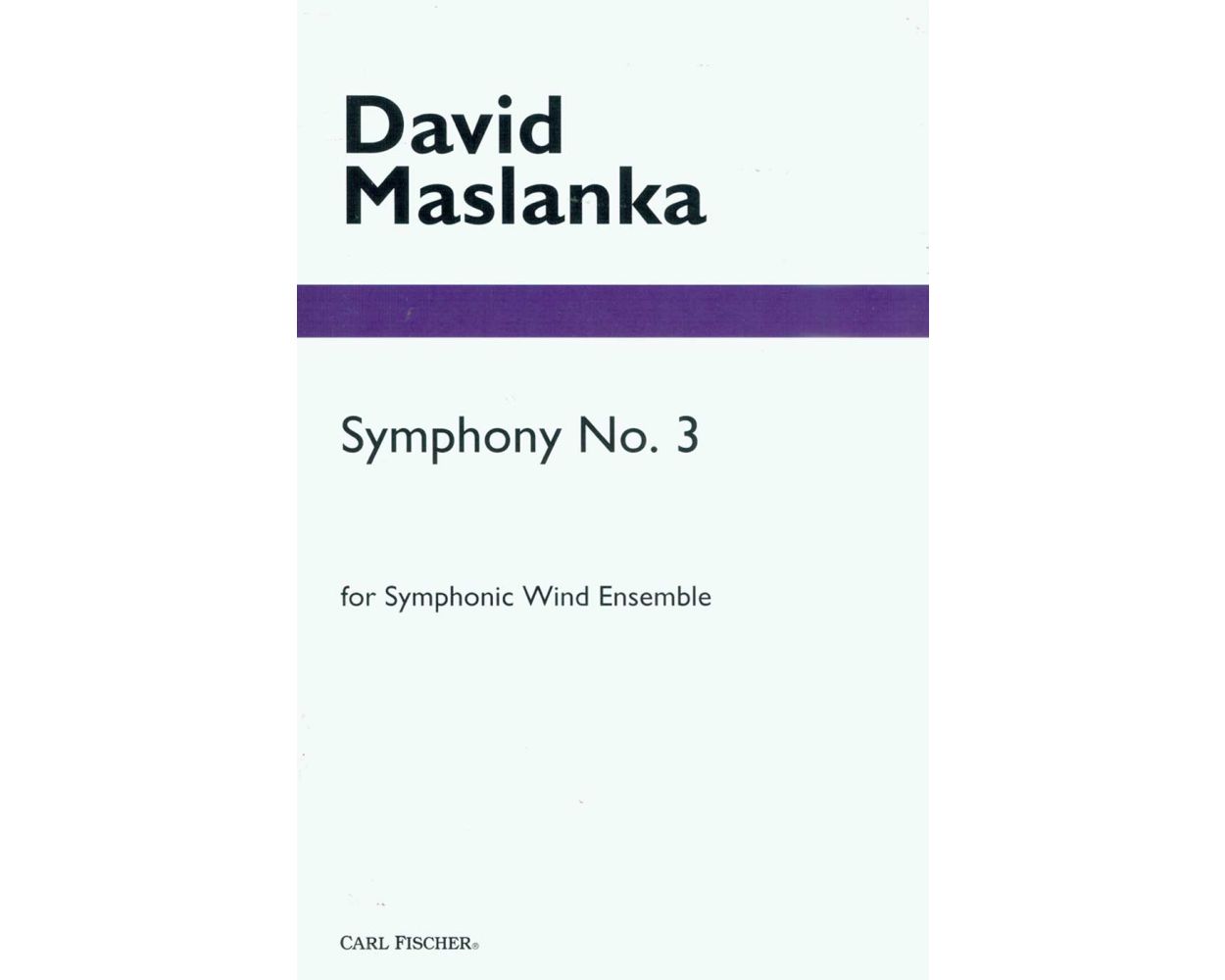 £90.00
£90.00Symphony No. 3
The largest of David Maslanka's wind symphonies in scale and duration, Symphony No. 3 was commissioned by the University of Connecticut Symphonic Wind Ensemble, Gary Green, conductor, and premiered by them in 1991. It is in five movements and lasts nearly 50 minutes. The moderate tempo and forceful character of the first movement contrast with the serene "nature" music of the second movement. The third movement, a fast and bristling scherzo largely in A Minor, is followed by two slower movements, both labeled "lament." The composer characterizes the music of these movements as both sorrowful and joyful. The fifth movement, in particular, has the lamenting character overcome by an ecstatic vision of natural beauty and the life force. Symphony No. 3 is arguably Maslanka's most profound and satisfying large-scale work, and it ends in an unequivocal A Major that has the feeling of a benediction. Large score and parts are available on rental.
Estimated dispatch 12-14 working days
-
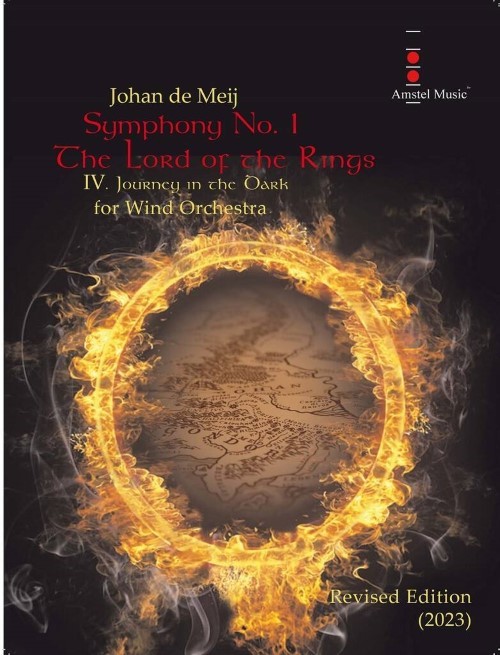 £132.00
£132.00Journey in the Dark (from Symphony No.1: The Lord of the Rings) (Concert Band - Score and Parts) - De Meij, Johan
Revised 2023 editionJohan de Meij's first symphony The Lord of the Rings is based on the trilogy of that name by J.R.R. Tolkien. This book has fascinated many millions of readers since its publication in 1955. The symphony consists of five separate movements, each illustrating a personage or an important episode from the book. The fourth movement describes the laborious journey of the Fellowship of the Ring, headed by the wizard Gandalf, through the dark tunnels of the Mines of Moria. The slow walking cadenza and the fear are clearly audible in the monotonous rhythm of the low brass, piano and percussion. After a wild pursuit by hostile creatures, the Orks, Gandalf is engaged in battle witha horrible monster, the Balrog, and crashes from the subterranean bridge of Khazad-D m in a fathomless abyss. To the melancholy tones of a Marcia funebre, the bewildered Companions trudge on, looking for the only way out of the Mines, the East Gate of Moria.Duration: 9.00
Estimated dispatch 7-14 working days
